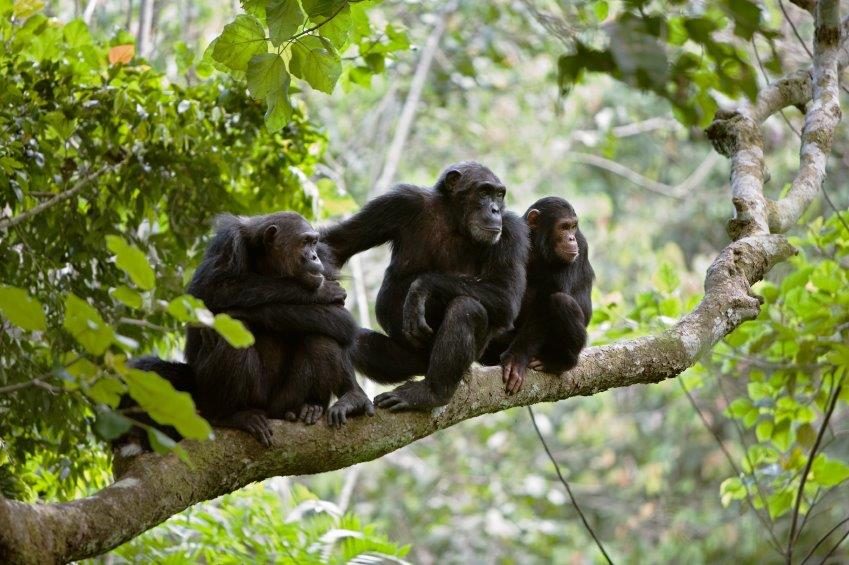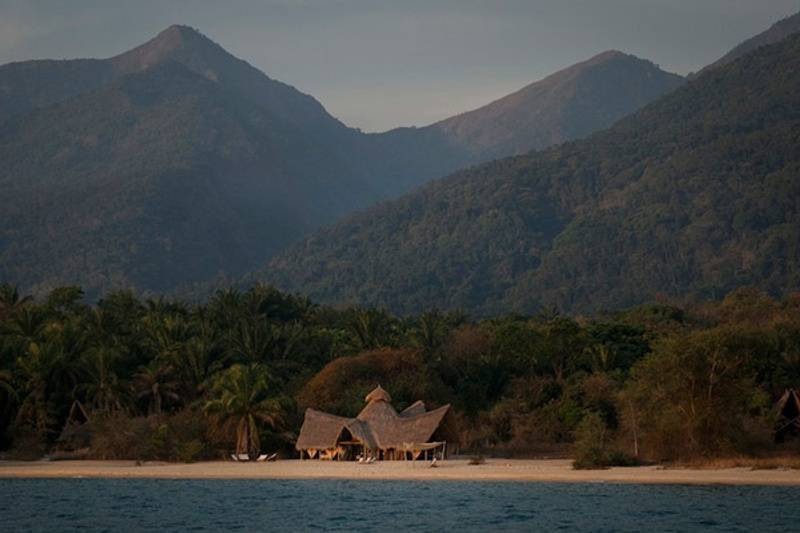In honor of World Chimpanzee Day on July 14, here are five trailblazing women who evolved the field of primatology and have played a critical role in the conservation of great apes.

Jane Goodall
Dr. Jane Goodall’s long-term study of wild chimpanzees in Tanzania led her to worldwide acclaim. Beginning in July of 1960, at the age of 26, she traveled from England to live among the Kasakela chimpanzee troop in the rainforests of Gombe Stream National Park. With little more than a notebook and binoculars in hand, her observations led to many notable discoveries, including that chimpanzees make and use tools, considered one of the greatest achievements of twentieth-century scholarship. The famed primatologist and anthropologist has dedicated her life to the conservation of these great apes, advocating for ecological preservation through The Jane Goodall Institute. Through nearly 60 years of inspiring work and advocacy, she serves as a conservation heroine for millions and has empowered young girls across the globe to become a voice for wildlife, including this author. Nat Hab travelers visit Greystoke Mahale in Tanzania, a permanent research center established in 1965 on the shores of sapphire-blue Lake Tanganyika as an extension of Jane Goodall’s work with chimpanzees just north at Gombe Stream.

Birute Galdikas
Dr. Birute Galdikas is the world’s foremost authority on orangutans. Her pioneering fieldwork in Borneo’s rainforests began in the early 1970s and has lasted for over 40 years, making it one of the lengthiest continuous studies of a mammal ever conducted. Galdikas transformed our understanding of these enigmatic primates, the least understood of the great apes at the time, revealing not just their social structures and ecological roles, but also their emotional depth. Growing up, she was inspired by Jane Goodall and Dian Fossey, and would later join their ranks as one of the “Trimates,” the founding mothers of contemporary field primatology. As he had done for Goodall and Fossey, paleoanthropologist Louis Leakey helped Galdikas set up her research camp with funding from the National Geographic Society. At the age of 25, amid the iridescent greens of Tanjung Puting Reserve near the edge of the Java Sea, she began her field studies, gaining valuable insights into orangutan behavior and diet.
Galdikas’s conservation efforts extend beyond advocacy, largely focusing on the rehabilitation of orangutans orphaned by deforestation and the illegal pet trade. In 1986, she founded Orangutan Foundation International to help save orangutans and preserve rainforests around the world. Travelers on Nat Hab’s Borneo adventure seek out orangutans and learn about their conservation at Kabili-Sepilok Forest Reserve, Sepilok Orangutan Rehabilitation Center, Kinabatangan Wildlife Sanctuary and Danum Valley Conservation Area.

Patricia Wright
Dr. Patricia Wright’s work with lemurs has illuminated the intricate world of these unique primates and their critical role in the ecosystems of Madagascar. With a career spanning decades, Wright has gone beyond mere observation to actively champion the conservation of these at-risk species and their rapidly diminishing habitats. Her initiatives have not only advanced scientific understanding but have catalyzed real-world conservation efforts, including the establishment of Ranomafana National Park in 1991, following her discovery of the critically endangered golden bamboo lemur in 1986. During a primatology course in college, this author had the opportunity to meet Wright, who spoke about her life’s work studying the social interactions of wild lemurs and her commitment to conservation in Madagascar.
Nat Hab travelers visit Ranomafana during their Madagascar Wildlife Adventure, taking guided hikes in search of the 12 species of lemurs that reside there. Near the entrance of the national park is Center ValBio, Madagascar’s leading field research center run by Wright. Her work serves as a poignant reminder that the fate of lemurs is a bellwether for the health of our planet, linking the well-being of a single species to the broader tapestry of global biodiversity.

Dian Fossey
Dian Fossey’s groundbreaking work with mountain gorillas redefined our perception of these majestic creatures. Surrounded by the misty jungle-draped volcanoes of Rwanda, Fossey shattered barriers to form an unbreakable bond with the largest of the great apes, unraveling the intricacies of their social dynamics and shedding light on their vulnerability to human activities such as deforestation and poaching. Although Fossey’s life was cut short, her work continues through the Dian Fossey Gorilla Fund, the world’s leading conservation organization dedicated to the protection of mountain gorillas.
Travelers on Nat Hab’s Ultimate Gorilla Safari trek to see mountain gorillas in Volcanoes National Park, where Dian Fossey made her discoveries. Several habituated gorilla families live in the park, and we learn how vital our ecotourism presence is to their survival before trekking in search of them.

Claudine André
Claudine André’s revolutionary work with bonobos has reshaped our understanding of these endangered primates who share 98.7% of our DNA. André’s extraordinary efforts include establishing Friends of Bonobos, the world’s only bonobo sanctuary and rewilding program, providing a safe haven to young bonobos orphaned by bushmeat hunting in the Democratic Republic of the Congo. Her compassionate bond with these intelligent beings has unveiled the depths of their emotional complexity, showcasing their capacity for empathy and cooperation. Claudine’s message for today’s young conservationists? “You must never lose hope, because there is always a solution.”

Conservation Travel & Women in the Wild
As World Wildlife Fund’s conservation travel partner, Natural Habitat Adventures offers nature expeditions to observe endangered primates around the world, including orangutans, gorillas, chimpanzees and lemurs. Conservation travel imbues value to these natural habitats, bringing economic resources to local communities and inspiring them to protect wild places and the wildlife that thrives within them.
Interested in a nature encounter exclusively in the company of women and led by outstanding women naturalist guides? Our Women in the Wild series offers the chance to learn about intrepid women who have long been leaders in science, global exploration and environmental protection. Empowering women begins with sharing their stories. And there’s no better context in which to show and tell those stories than by taking inquisitive women travelers into settings where they can learn about women’s accomplishments and conservation achievements in the nature destinations we visit.

























